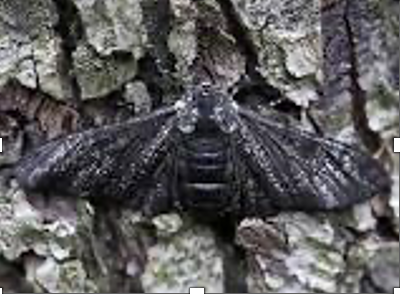Years 5 - 6
Adaptations, how plants and animals have adapted to their environment
Overview
Module 1 - The passage of water through plants, and the origin of heat and how to measure it, provide introductions to how plants and animals have adapted to low rainfall and high environmental temperatures. Students explore how plants and animals are adapted morphologically, behaviourally and physiologically to these environmental stressors.
Module 2 – Angles are used to measure the height of a tree. An introduction to vectors explores how far a projectile travels and how an antlion ‘forages’.
Outcomes
By the end of Year 6, students understand
• the structure of plant tissues and how leaves need sunlight to make food
• how plants pull up water from the soil
• plants have morphological adaptations to aridity and high temperature
• what is heat and how to measure it
• animals have morphological, behavioural and physiological adaptations to aridity, high temperature, foraging, lack of food, and egg incubation
• how a vertebrate animal ‘drinks’, an invertebrate animal desiccates, and an aquatic vertebrate burrows
• how angles maximise the foraging of the antlion, control the distance of a projectile and measured to estimate the height of a tree
Curriculum Links
• Living things have structural features and adaptations that help them to survive in their environment (ACSSU043)
• With guidance, pose clarifying questions and make predictions about scientific investigations (ACSIS231)
• The growth and survival of living things are affected by physical conditions of their environment (ACSSU094)
• With guidance, pose clarifying questions and make predictions about scientific investigations (ACSIS232)
A Story of How Adaptation Works – The Peppered Moth (Biston betularia):
The peppered moth found in England, is so called because its wings are speckled black and white, like pepper.
About 200 years ago, there were large colonies of these peppered moths in old forests; so old that lichens had grown on the tree trunks and branches, making the tree trunks appear speckled. [Lichens are very primitive plants that you may see growing on old rocks.] Here, the moths rested for the day, looking very like the tree branch with its lichens; they were camouflaged.
This species had probably been resting on these branches during the day for many thousands of years. They appeared to be adapted to resemble the branch. But were they? Was it merely a coincidence that the speckled moth had found a suitable resting place during the day? Occasionally, a black moth would appear (a variation), but these were easily spotted by the birds and eaten.
During the industrial time in Britain, in the 1800s, the level of black smoke increased in the air, killing the lichens, and turning the tree trunks black. The peppered moths became easily spotted by the birds and their numbers declined, until very few were left.
Some years later, scientists noted that moth numbers had increased, but every moth had the darker wings. What had happened? The dark colour of some moths had allowed them to survive, because they were camouflaged in their new environment. Nature had selected them to survive. They appeared to be adapted to their environment. But were they? The proof was that as each new generation of moths had the dark colouration, it was obviously inherited; therefore, a true adaptation.
That the dark moths were able to survive on the blackened trees, and the peppered moths didn’t, is called ‘survival of the fittest’. And, that they survived in the new black environment, and produced more dark-coloured young, is called Natural Selection.
Teacher Note: When deciding on whether a particular trait is an adaptation or not, it is important to identify the environmental force that selected for it.
Dark Peppered Moth on Tree Trunk
From the Expert
Don Bradshaw says…
“Adaptation is a word that is much used, and misused. We use it casually to describe how a person or a thing is well fitted to its task. A well-designed seat, for example, we describe as one that is adaptable for certain sized people. A workman is very adaptable if he is able to carry out a range of repairs.
Various attributes of plants and animals are also considered to be adaptations to their environments, such as shiny leaves in desert plants that reflect the sun’s rays, wings and feathers that enable birds to fly, the colours of many insects that camouflage them on particular backgrounds. These attributes, however, have developed over time, long time, through the process of evolution. The use of the term adaptation here is obviously different, in that it assumes the attribute has been brought about by natural selection.
Natural Selection is the differential survival and reproduction of only those individuals that possessed this feature.
It also implies that there was some factor working against those individuals that did not possess the attribute. For example, very hot rays from the sun killed off those plants without shiny leaves; predation by sharp eyed birds killed off those insects that were not camouflaged. This is what is called the selective force that has favoured the spread of the attribute through the population.
Thus, care must be taken in not describing every difference or process as an adaptation. Plants, for example, flower when pruned, but do we conclude that they are adapted to secateurs? Similarly, some plants germinate and flower after fire, but this does not necessarily mean that they are adapted to fire.
In order for a trait to be considered as a true adaptation, evidence is needed that the trait is heritable and that it has evolved by natural selection in order to cope with a constant environmental pressure. This is not always easy to come by, and is the reason why the term, adaptation, should be used sparingly when considering the structure and function of plants and animals.

